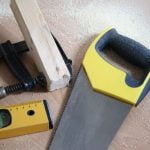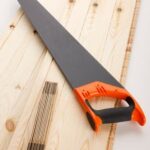Can you add a home improvement loan to your mortgage? Home improvement loans and mortgages are two common forms of financing for homeowners looking to fund their property needs. Home improvement loans, as the name suggests, are specifically designed for funding renovation or repair projects, while mortgages are used to purchase or refinance a home. In this article, we will delve into the possibility of merging these two types of loans.
When considering a major home improvement project, homeowners often explore different financing options that can best meet their needs. Some may find themselves wondering whether they can consolidate their home improvement loan with their mortgage. This article will address this question and provide valuable insights on the benefits, considerations, steps, alternatives, real-life examples, and expert advice related to adding a home improvement loan to your mortgage.
Understanding the differences between home improvement loans and mortgages is crucial in making an informed decision about how to finance your renovation or repair project. By considering the advantages and drawbacks of each option, homeowners can determine the most suitable financing arrangement for their specific circumstances. Join us as we dive into this important topic and explore the various aspects of adding a home improvement loan to your mortgage.
Benefits of Adding a Home Improvement Loan to Your Mortgage
Consolidating a home improvement loan with a mortgage can offer several advantages for homeowners. One of the primary benefits is the potential cost savings that come with bundling both loans together. By adding a home improvement loan to your mortgage, you may be able to secure a lower interest rate on the combined amount, resulting in reduced monthly payments and long-term savings.
In addition to potential cost savings, combining a home improvement loan with your mortgage can also bring about greater convenience for homeowners. Rather than managing two separate loans with different payment schedules and interest rates, consolidating them into a single mortgage simplifies the repayment process. This can make budgeting and financial planning easier for homeowners, as they only need to track one loan instead of multiple debts.
Moreover, adding a home improvement loan to your mortgage can provide access to a larger sum of money for renovation projects or repairs. Mortgages typically allow for higher borrowing limits compared to standalone home improvement loans, giving homeowners the flexibility to undertake more extensive renovations without seeking additional financing options. This can be particularly beneficial for major home improvement projects that require substantial funding.
| Advantages | Details |
|---|---|
| Potential Cost Savings | Lower interest rate on combined amount, reduced monthly payments |
| Convenience | Simplified repayment process, easier budgeting and financial planning |
| Access to Larger Funds | Higher borrowing limits compared to standalone home improvement loans |
Considerations Before Adding a Home Improvement Loan to Your Mortgage
Potential Drawbacks and Risks
Before deciding to add a home improvement loan to your mortgage, it is crucial to consider the potential drawbacks and risks associated with this decision. One significant risk is that by consolidating the home improvement loan with your mortgage, you may end up paying more in interest over the long term.
This is because mortgages tend to have longer repayment periods, which means you could be paying interest on the home improvement costs for a much longer time than if you had taken out a separate loan.
Impact on Interest Rates and Overall Costs
Adding a home improvement loan to your mortgage can also impact your interest rates and overall costs. Depending on the terms of the mortgage and the current market conditions, combining the two loans could result in higher interest rates compared to taking out a separate home improvement loan. Additionally, there may be additional fees and closing costs associated with refinancing your mortgage to include the home improvement loan, which can further increase your overall costs.
Financial Stability and Loan Repayment
Another important consideration is your financial stability and ability to repay both the mortgage and the home improvement loan. By adding more debt to your mortgage, you are increasing the amount of money you owe on your property.
This means that if you encounter financial difficulties in the future, such as job loss or unexpected expenses, you may be at a higher risk of defaulting on your payments. It’s essential to carefully assess your current financial situation and future outlook before making a decision.
Steps to Add a Home Improvement Loan to Your Mortgage
Adding a home improvement loan to your mortgage can be a strategic financial move for homeowners looking to renovate their property. This process can provide convenience and potential cost savings, but it’s important to understand the steps involved in combining these two types of loans.
1. Assess Your Finances: Before adding a home improvement loan to your mortgage, it’s crucial to evaluate your current financial situation. Take stock of your existing mortgage terms, outstanding balance, and interest rate. Additionally, consider the total amount you need for the home improvement project and how it aligns with your long-term financial goals.
2. Research Lenders: Once you’ve assessed your finances, start researching potential lenders who offer mortgage refinance options that include home improvement loans. Look for reputable institutions with favorable terms and conditions that meet your specific needs. It’s also advisable to compare interest rates, closing costs, and overall customer satisfaction ratings.
3. Understand the Application Process: When you’ve identified a suitable lender, familiarize yourself with their application process for combining a home improvement loan with your mortgage. This typically involves submitting detailed information about your income, assets, credit history, and details of the home improvement project. Be prepared to provide documentation such as renovation plans and cost estimates.
By following these steps, homeowners can navigate the process of adding a home improvement loan to their mortgage more effectively. However, it’s essential to consult with financial advisors or mortgage professionals to ensure that this option aligns with your long-term financial objectives.
| Steps | Description |
|---|---|
| Assess Your Finances | Evaluate current financial situation including existing mortgage terms and needed amount for renovation. |
| Research Lenders | Identify reputable lenders offering suitable terms for combining home improvement loan with mortgage. |
| Understand Application Process | Familiarize yourself with lender’s documentation requirements for applying for combined loan. |
Alternatives to Adding a Home Improvement Loan to Your Mortgage
When considering a home improvement project, adding a loan to your existing mortgage may not be the best option for everyone. Fortunately, there are several alternatives to consider when it comes to financing your renovations. Here are some alternative financing options to adding a home improvement loan to your mortgage:
- Personal Loans: Personal loans can be used for various purposes, including home improvements. These loans typically have fixed interest rates and repayment terms, making them a predictable option for budgeting your renovation project.
- Home Equity Lines of Credit (HELOC): A HELOC allows homeowners to borrow against the equity in their homes, using their property as collateral. This revolving line of credit can be a flexible way to fund home improvements as needed.
- Unsecured Home Improvement Loans: Similar to personal loans, unsecured home improvement loans do not require any collateral. These loans may have higher interest rates compared to secured options, but they do not put your property at risk.
Each of these alternative financing options has its own set of advantages and disadvantages. It’s important to carefully consider which option aligns best with your financial situation and renovation needs.
Before making a decision, it may also be beneficial to consult with a financial advisor or mortgage professional who can provide personalized guidance based on your individual circumstances and goals related to your home improvement project. By exploring these alternative financing avenues, you can make an informed decision that suits your specific needs and preferences while avoiding potential drawbacks associated with adding a home improvement loan to your mortgage.
Case Studies
Success Story 1: The Smith Family
The Smith family had been contemplating a major renovation on their home, including a new kitchen, bathroom upgrades, and an outdoor living space. After carefully considering their options, they decided to add a home improvement loan to their existing mortgage. By doing so, they were able to take advantage of the lower interest rates offered by their mortgage lender and streamline their monthly payments. This allowed them to make necessary upgrades to their home without breaking the bank.
Success Story 2: The Johnsons
The Johnsons found themselves in a similar situation when they wanted to undertake several home improvement projects. Instead of taking out multiple loans with varying interest rates, they chose to combine their home improvement loan with their mortgage. This decision not only simplified their finances but also helped them secure a favorable interest rate. As a result, they were able to complete all of their desired renovations without worrying about managing multiple loans and payments.
Impacts on Financial Situation
For both the Smith family and the Johnsons, adding a home improvement loan to their mortgage had positive impacts on their financial situations. They were able to benefit from potential cost savings, as well as the convenience of having one consolidated loan with consistent monthly payments. By carefully assessing the impact on their overall finances and consulting with financial advisors, these homeowners made informed decisions that ultimately improved the value and comfort of their homes while maintaining financial stability.
Expert Advice
Adding a home improvement loan to your mortgage is a decision that requires careful consideration. To help shed some light on the topic, we’ve gathered valuable insights and tips from financial advisors and mortgage professionals. Whether you’re contemplating this option or simply seeking expert advice, these tips can provide clarity and guidance as you navigate the decision-making process.
Below are some key pointers to keep in mind:
- Seek Professional Guidance: Before making any decisions regarding your mortgage and home improvement financing, it’s crucial to consult with a financial advisor or mortgage professional. These experts can offer personalized advice based on your specific financial situation and goals.
- Evaluate Total Costs: When considering combining a home improvement loan with your mortgage, it’s important to carefully assess the overall costs. This includes factoring in potential changes to interest rates, closing costs, and any additional fees associated with the consolidation.
- Long-Term Financial Implications: Experts advise homeowners to take into account the long-term implications of adding a home improvement loan to their mortgage. Consider how this decision may impact your financial stability, equity in the home, and overall debt management strategy.
In addition to seeking professional advice, it’s essential for homeowners to conduct thorough research and weigh the pros and cons of consolidating their loans. By arming themselves with knowledge and expert insights, individuals can make more informed decisions about their home improvement financing options. As always, taking a proactive approach to financial matters can lead to more favorable outcomes in the long run.
Conclusion
In conclusion, the decision to add a home improvement loan to your mortgage is not one to be taken lightly. While there are certainly benefits in terms of cost savings and convenience, it is important for homeowners to carefully consider the potential drawbacks and risks involved. By weighing the impact on interest rates, overall costs, and long-term financial implications, individuals can make an informed decision that aligns with their specific needs and goals.
It is crucial for homeowners to explore alternative financing options for home improvement projects before committing to adding a loan to their mortgage. Personal loans and home equity lines of credit are viable alternatives that may offer more flexibility and potentially lower costs in the long run. By evaluating these options alongside the possibility of consolidating a loan with their mortgage, individuals can make a well-rounded decision that suits their financial circumstances.
Ultimately, seeking advice from financial advisors and mortgage professionals is highly recommended when considering adding a home improvement loan to a mortgage. These experts can provide valuable insights and guidance based on individual financial situations, thereby empowering homeowners to make decisions that are truly in their best interests. In doing so, individuals can ensure that they are making informed choices that support their overall financial well-being in the long term.
Frequently Asked Questions
Can I Borrow More on My Mortgage for Home Improvements?
It is possible to borrow more on your mortgage for home improvements through a cash-out refinance or a home equity line of credit (HELOC). A cash-out refinance involves refinancing your existing mortgage for a larger amount and receiving the difference in cash, which you can then use for home improvements.
A HELOC, on the other hand, allows you to borrow against the equity in your home for renovations or upgrades.
Can You Add a Loan to Your Mortgage?
Yes, it is possible to add a loan to your mortgage through a process known as a “loan consolidation” or “debt consolidation.” This involves combining multiple debts, including personal loans, credit card debt, or car loans, into one larger loan with your mortgage.
By adding these loans to your mortgage, you may be able to secure a lower interest rate and have only one monthly payment.
Can Upgrades Be Added to Mortgage?
Upgrades can typically be added to a mortgage through renovation or improvement loans. These types of loans provide funding for specific upgrades such as kitchen remodels, bathroom renovations, energy-efficient upgrades, or even adding an additional room to the house.
They are designed to finance the cost of the upgrades and often allow homeowners to roll these expenses into their existing mortgage.

I’m thrilled to have you here as a part of the Remodeling Top community. This is where my journey as an architect and remodeling enthusiast intersects with your passion for transforming houses into dream homes.





